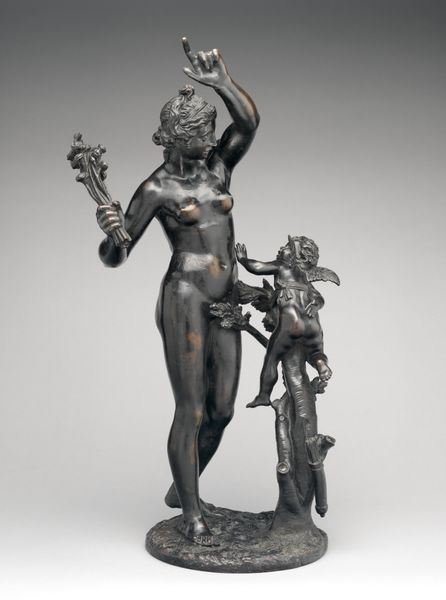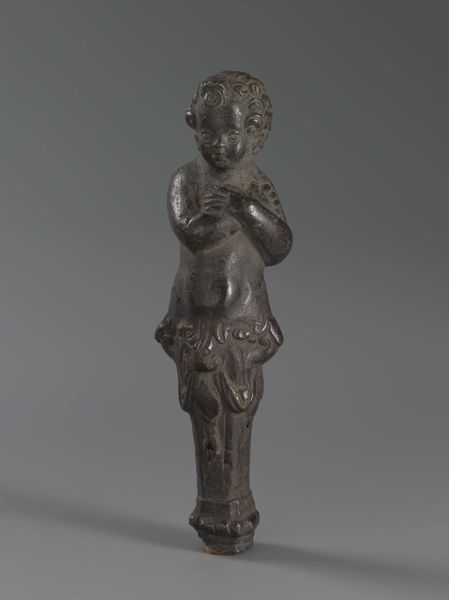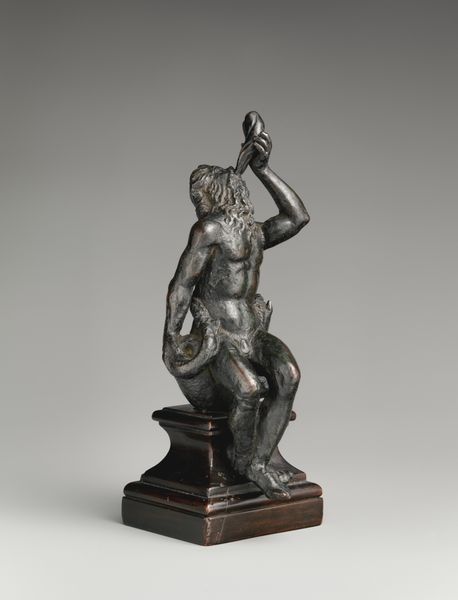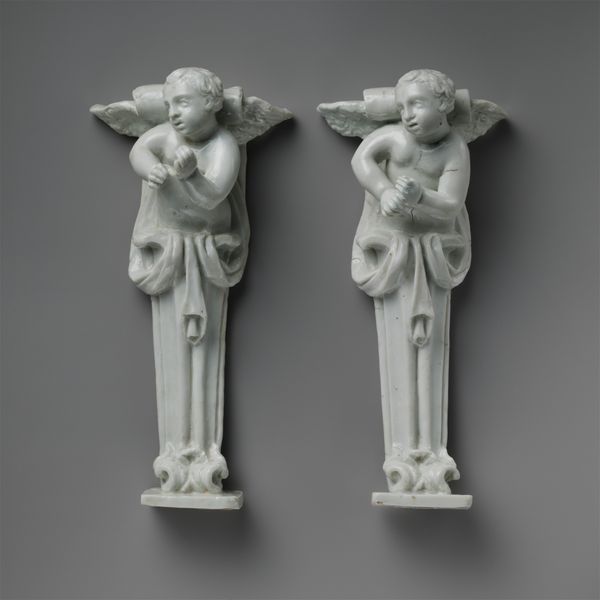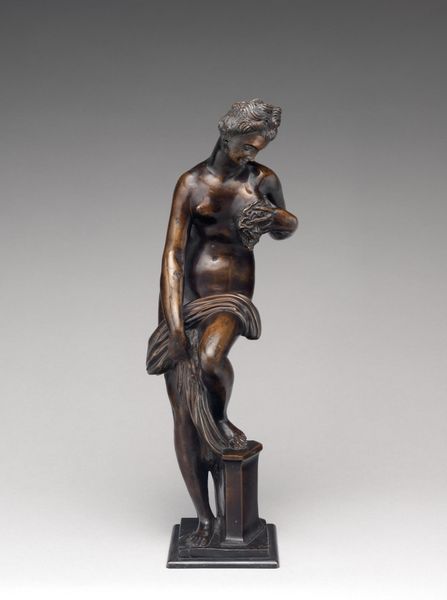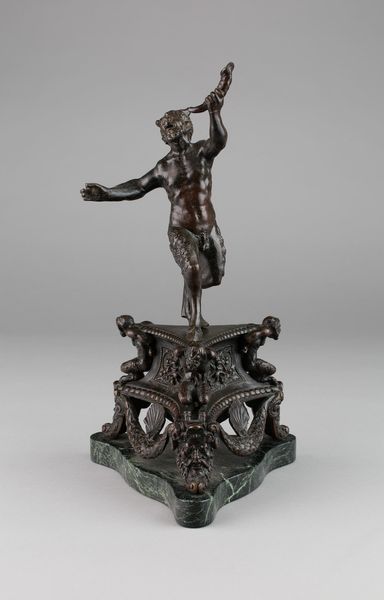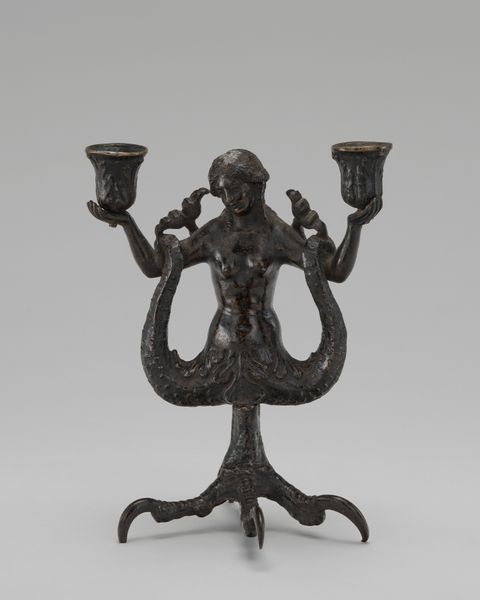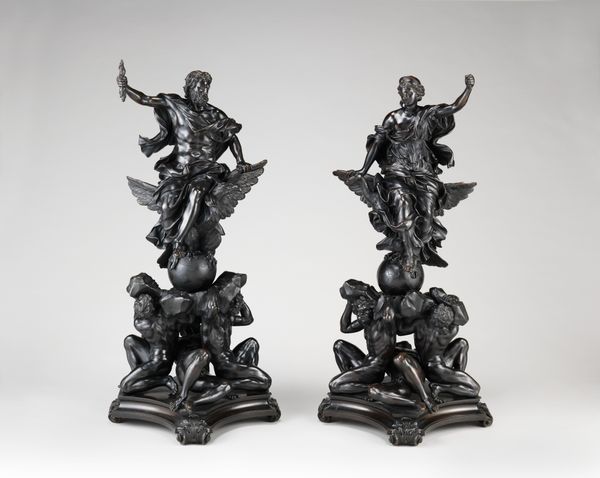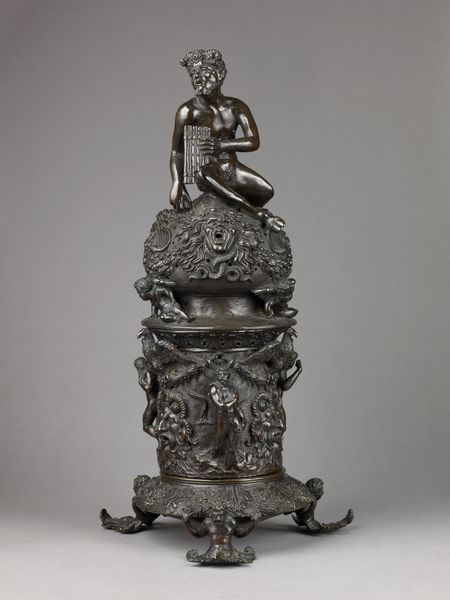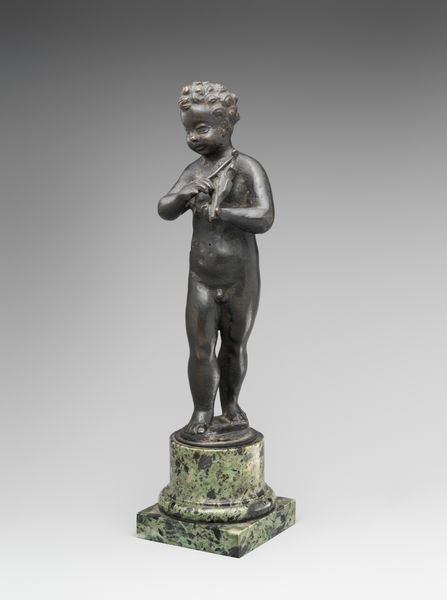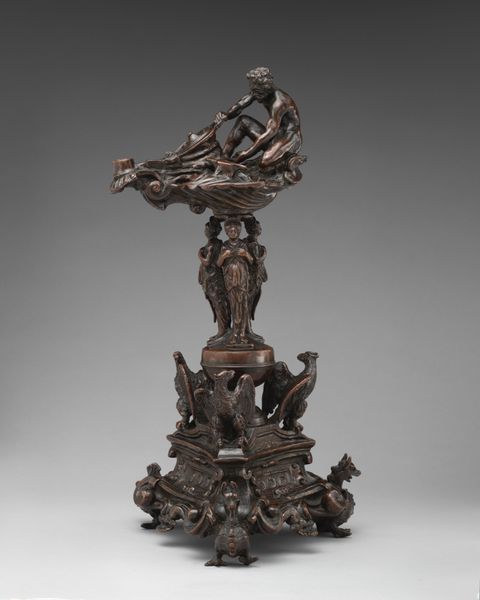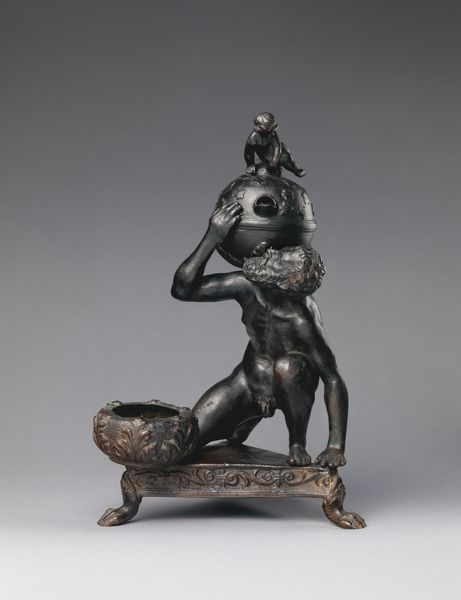
bronze, sculpture
#
sculpture
#
bronze
#
mannerism
#
11_renaissance
#
sculpture
#
decorative-art
Dimensions: Overall (.1 confirmed): 21 in. × 11 in. × 6 1/2 in. (53.3 × 27.9 × 16.5 cm); Overall (.2 confirmed): 20 1/2 in. × 9 1/2 in. × 7 in. (52.1 × 24.1 × 17.8 cm)
Copyright: Public Domain
Curator: We're looking at a pair of bronze candlesticks, crafted between 1585 and 1615 by Niccolò Roccatagliata. You can find them on display at the Metropolitan Museum of Art. Editor: My first impression is… theatrical. They have this dramatic heft, almost as if they should be part of some operatic performance. Curator: Indeed, the Mannerist style certainly leans into that drama. Note the cherubic figures—almost overly muscular—supporting the ornate candleholders. Roccatagliata's skill in bronze casting is evident in the precise detail, particularly in the rendering of their curly hair and delicate wings. Editor: Considering the era, I wonder about the purpose they served beyond simple illumination. Who would have commissioned something so elaborate? The cherubs themselves evoke a sense of religious innocence but presented in such an overtly sexualized way; this was clearly a piece made for those who lived an aristocratic life of religious opulence. The choice of bronze over a more precious metal also indicates a practical, rather than strictly devotional intention. Curator: Interesting observation. I see the bronze as lending itself to the sculpture's capacity to take on rich texture—emphasizing a contrast of polished and matte surfaces and activating every sculptural aspect, directing the eye to witness and savor Mannerist artifice. Editor: Though they are exquisite and a demonstration of undeniable technical ability, they do speak to the ways in which displays of wealth could at times come across heavy handed or even exploitative. Considering their origins, are we meant to simply admire the material display without considering those the material wealth was built on? Curator: It presents a tension that is essential to any meaningful art object. Editor: Perhaps they're a reminder that beauty and complexity often emerge from places of conflict and paradox. Curator: Precisely. It makes these candlesticks far more interesting than mere objects of decoration, don't you agree?
Comments
No comments
Be the first to comment and join the conversation on the ultimate creative platform.
